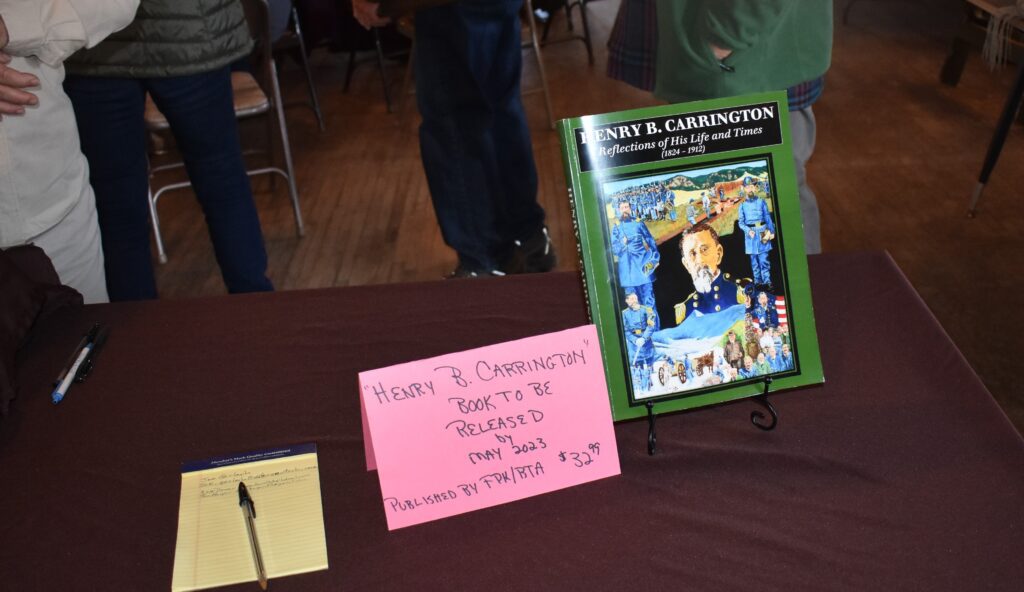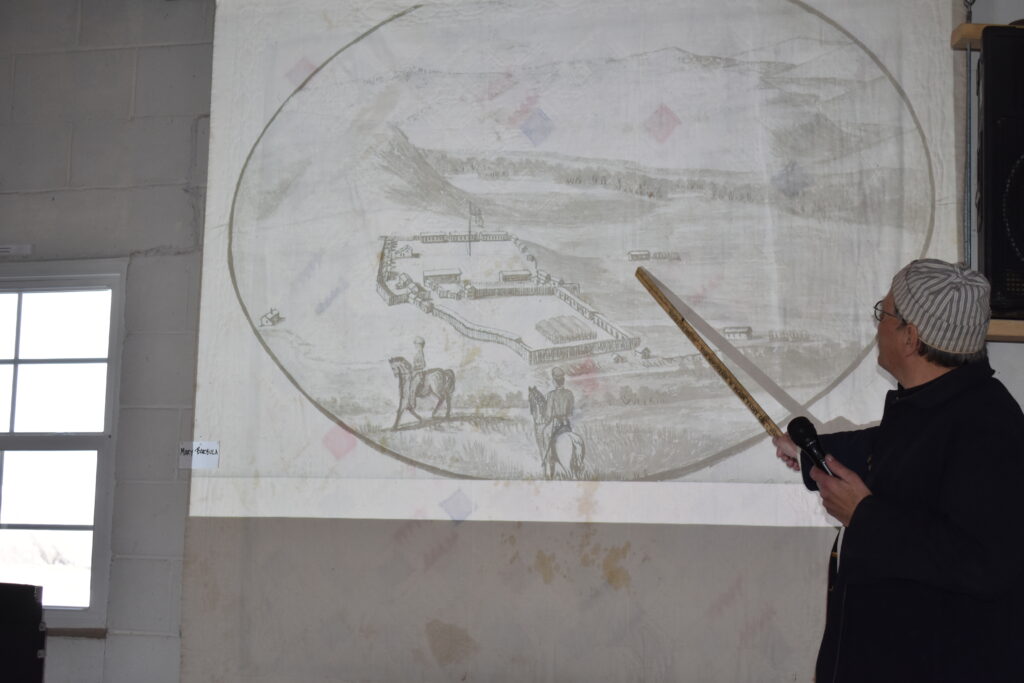News
Fetterman Fight Talk Draws Large Crowd


Published
1 year agoon
By
cvannoy
On Saturday, April 15, Bob Wilson, historian gave a talk about the Fetterman Fight at Kearney Hall, and afterward led a tour of the battlefield.
A good crowd of around 40 people attended the power-point presentation and talk.
Dave McKee, president of the FPK/BTA introduced Wilson, and talked about the FPK/BTA and the new book that will out in May
McKee thanked the Big Horn City Historical Society, FPK/BTA member Joann Puckett, and the folks from the Wyoming Room at the Sheridan Library for their help on the book. He said it includes documents, Carrington’s writings and things that were written about him, and gives a perspective of his life before and after Fort Phil Kearny. It is available for advanced orders and will be at the Fort Phil Kearny book shop after May 1.

Wilson took the podium, starting his talk with the background events that led up to the building of Fort Phil Kearny, Fetterman Fight, and why it happened. He touched on the Bozeman Trail and the gold seekers crossing Indian lands.
He talked about the Sand Creek Massacre in 1864, when Black Kettle’s Village was attacked by Colonel John Chivington’s command. The warriors were out raiding, and there were mostly women in the village. Chivington attacked the village to bring more fame to himself, as his star dimmed after the Civil War.

The Indians, to avenge the massacre, began harassing the white settlers, and the army was sent to punish the Indians with the Powder River Expedition. Brigadier General Patrick E. Connor was in charge of the expedition, and in 1865, he built Fort Conner which was later renamed Fort Reno, which was abandoned in 1868 under the terms of the Fort Laramie Treaty.
From there Connor marched North, and attacked an Indian village on the Tongue River.
After the Connor Battle, which took place near the present-day town of Ranchester, Connor was relieved of his command. Washington politics had a lot to do with the happenings out west and the Indian problem.
In 1866, Colonel Carrington was at Fort Laramie during treaty negotiations with the various Indian Tribes. He was sent the area near what is now Story to build a fort which they named Fort Phil Kearny.

Carrington had orders to defend the people on the Bozeman Trail, but he had no orders to attack the Indians, still, many of his officers were egging him to attack. Carrington had never been in combat, but some of his officers had their ranks demoted after the Civil War, and wanted their higher ranks back, so they wanted to fight the Indians.
The Indians had been attacking the wood trains, and on Dec. 6, a couple of weeks before the Fetterman engagement, Carrington formed two units, one of cavalry and one of mounted infantry, they were sent to pursue the Indians.

They soldiers rode into an ambush, and Lieutenants Bingham and Grummond, cavalry officers, were only armed with swords. Grummond said he just closed his eyes and began swinging his sword, and he escaped, but Bingham didn’t and he was killed.
The soldiers didn’t really know how many Indians were around the fort.
The Indians stole a lot of livestock from the fort, and they especially liked mules. “I guess mules tasted pretty good.”
There were members of the Crow tribe camped near the fort, and the Sioux, who were enemies of the Crow, asked the Crow if they wanted to join in the battle and some did.

The Native Americans had a different name for the battle. Some of the Native American chiefs involved were Red Cloud, who was not in battle but acted as an advisor to the war chiefs, American Horse and Wild Hog. Crazy Horse acted as decoy to draw the soldiers away from the main patrol. They depended a lot on visions and signs to know when it was favorable for battle or hunting.

Wilson added that no one knew exactly what happened at the Fetterman Fight, as the soldiers were dead and the Indians had a very narrow perspective, basically just individual memories of the battle. He added that some of the information actually came from a clairvoyant.
During the fight, the soldiers left at the fort could hear the firing and at one point they heard two volleys close together. But that left Fetterman’s soldiers without ammunition for a brief moment and the Indians over-ran them. Almost all their bodies were found within 30 to 40 feet of where the monument marking the battle now stands.
No one is sure how many Indians were killed in the battle, but estimates range from 10 to 138. However, according to one account,
After the talk, many of the attendees went up to battlefield and Wilson explained the battle and pointed out where the various engagements took place.

John Horton
January 9, 2024 at 6:49 pm
Did our friend Bob Wilson make this wonderfully detailed presentation so that all of us would be able to say thank you Bob for making the best of your approaching end on this earth. We look forward to being with you in the eternities. I wonder if I will meet the natives Bob has told us about. A treaty was committed to but the after war economic conditions caused the ignoring of that contract. It was wrong to ignore the Treaty.